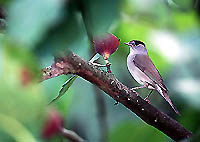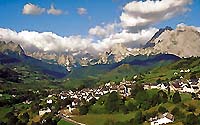PHOTO
Couleurs Nature
Nature photography from southwest of France
|
|
|
|
Ces photographies d’oiseaux, d’insectes, de fleurs, etc, issues d'une collection d'images naturalistes, ont été prises dans le Sud-Ouest de la France. Au nord de cette zone, la Charente, à vocation agricole (on y produit le célèbre cognac), incarne la mesure et la douceur de vivre. Sa faune et sa flore sont diversifiées, bénéficiant d’un climat doux et humide. Les mutations de l’agriculture et la dégradation des biotopes naturels (haies, coteaux calcaires, etc) entraînent hélas la disparition de certaines espèces. La côte Atlantique accueille limicoles et oiseaux marins. Au sud, la chaîne des Pyrénées a longtemps constitué une barrière infranchissable entre la France et l’Espagne, culminant à 3400 mètres. Ce massif , aux vallées encaissées, abrite une faune et une flore de montagne riches, parfois même endémiques. L’ours, l’isard, les grands rapaces ( et bientôt le loup ? ) tentent d’y conserver, ou retrouver, une place souvent contestée par l’homme. Entre les deux s'étend la forêt landaise, le plus grand massif forestier d’Europe : 628000 hectares de pins maritimes alignés comme au défilé, des kilomètres de plages bordant un océan aux vagues appréciées des surfeurs, mais aussi quelques lacs et étangs accueillants aux oiseaux migrateurs. |
These pictures of birds, insects, flowers, etc, part of a naturalistic photo library, are taken in southwest of France. The
north of this region, Charente, is an agricultural vocation (famous
"cognac" is produced here) and an embodiment of a fine, timeless life. Its fauna and flora are so varied, as the result of a mild and humid
climate. The mutation of agriculture and the degradation of natural ecosystems
(hedges, liestone hills, etc) is the cause, unfortunately, of the extinction
of certain species.
|
COPYRIGHT PHILIPPE VAN DORSSELAER © 1999-2008


